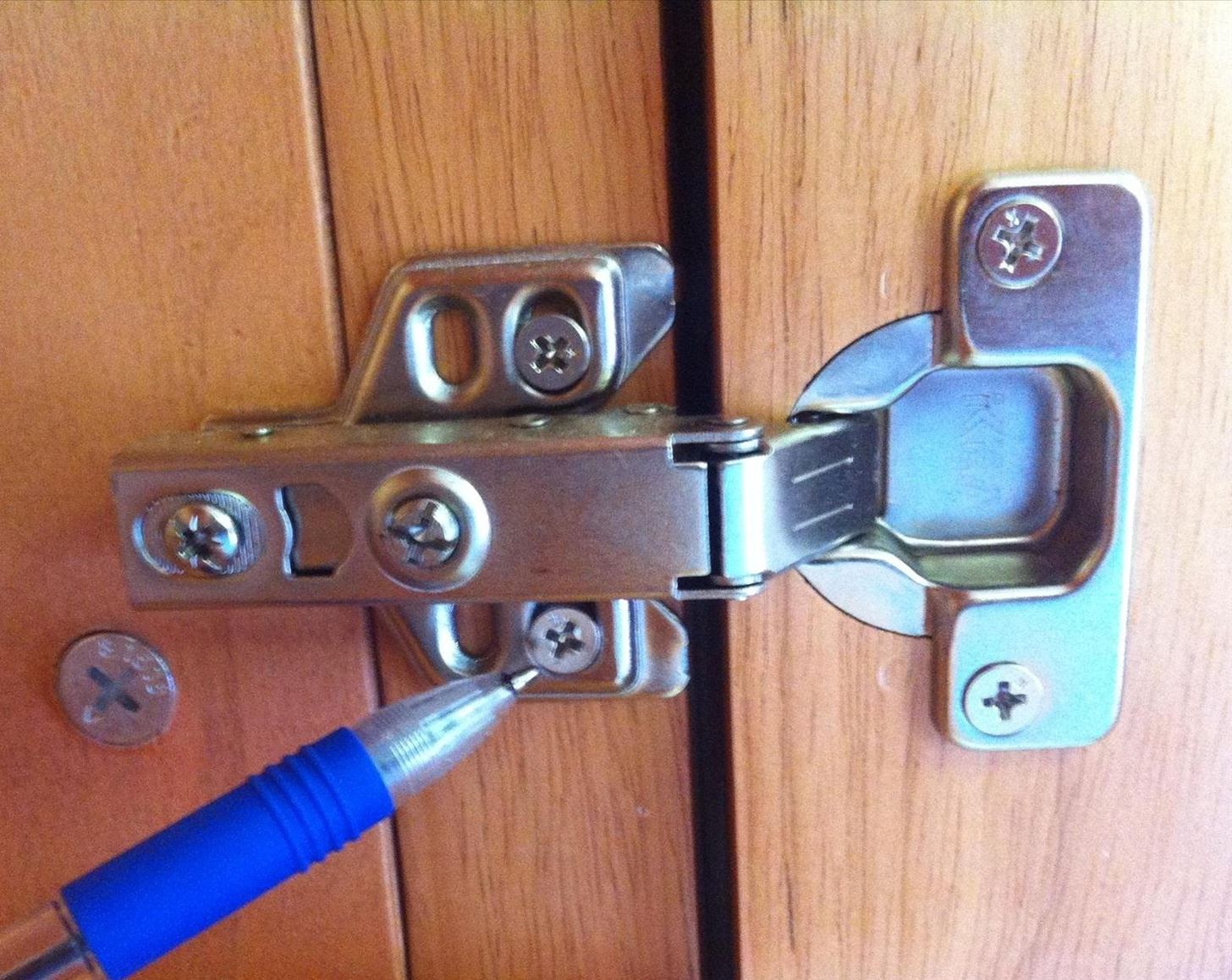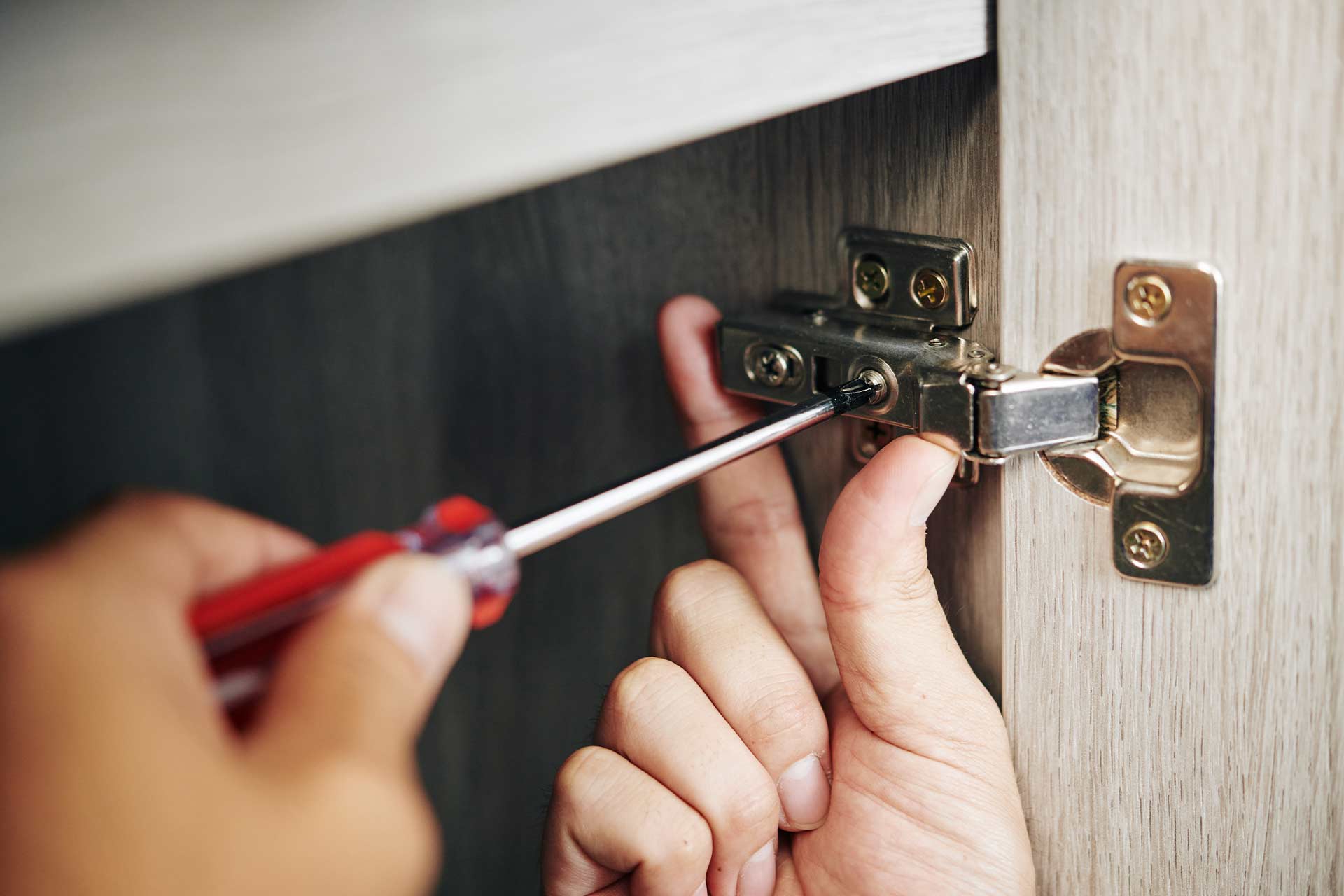Common Issues with Kitchen Cabinet Doors

Adoi, adjusting kitchen cabinet doors, kan? Seems simple, tapi banyak hal bisa terjadi, denangkan! From a little sag to doors that stick like lem, many issues can arise. Let’s look at the most common problems and how to handle them, ya. We’ll go through the problems, the tools you’ll need, and the reasons why these problems happen. Insya Allah, setelah ini, ado urusan dengan pintu kabinet, udah tau caranya!
Sagging Cabinet Doors
Sagging doors are a very common problem, especially with older cabinets or those made from less durable materials. This occurs when the door starts to droop downwards in the middle, creating an uneven gap between the door and the frame. Imagine a door that looks like it’s wearing a frown – that’s sagging! This is often caused by the weight of the door itself, or perhaps too much weight from items stored inside the cabinet. A saggy door can be unsightly and may even make it difficult to open and close the cabinet smoothly.
Misaligned Cabinet Doors, Adjusting kitchen cabinet doors
Misalignment means the door isn’t sitting squarely in its frame. It might be too far to one side, or it might have a gap on one side but not the other. It can look quite lopsided, like someone pushed it out of place! This can happen due to settling of the cabinet itself, or maybe the hinges have loosened over time. A misaligned door can look bad and also make the cabinet difficult to use.
Sticking Cabinet Doors
A sticking door is a real pain! It might rub against the frame, making a grating sound and requiring extra force to open and close. Sometimes, it even gets stuck completely. This can be caused by swelling of the wood due to moisture, or maybe the door itself has warped slightly. A sticking door is annoying and can even damage the door and frame over time.
Tools Needed for Cabinet Door Adjustments
Understanding the tools needed is half the battle, ya! Here’s a table outlining essential tools and their usage:
| Tool Name | Purpose | How to Use | Safety Precautions |
|---|---|---|---|
| Screwdriver (Phillips and Flathead) | Tightening and loosening screws on hinges and catches | Use the appropriate size and type of screwdriver to avoid damaging the screw heads. Apply firm, even pressure. | Avoid applying excessive force, which could strip the screw heads. Always use the correct size and type of screwdriver. |
| Level | Checking for alignment of doors and frames | Place the level against the door and frame to ensure they are perfectly aligned. | Ensure the level is clean and free of debris to obtain accurate readings. |
| Measuring Tape | Measuring gaps and distances | Measure the gaps between the door and frame to assess the extent of misalignment. | Handle the tape measure carefully to avoid damage. |
| Adjustable Wrench | Adjusting hinges and catches | Use the wrench to carefully tighten or loosen hinge screws. | Avoid over-tightening, which could damage the hinges or screws. |
Causes of Cabinet Door Problems
Now, let’s talk about why these problems happen. There are several reasons, and understanding them will help you prevent future issues.
- Age and Wear and Tear: Like anything else, cabinets and their doors wear down over time. Screws loosen, wood expands and contracts, and hinges can fail.
- Improper Installation: If the cabinets weren’t installed properly in the first place, doors are more likely to sag, misalign, or stick. A solid foundation is key!
- Moisture Damage: Exposure to excessive moisture can cause wood to swell, leading to sticking and warping. This is especially true in kitchens, which can be humid environments.
Step-by-Step Adjustment Techniques: Adjusting Kitchen Cabinet Doors

Adoi, adjusting kitchen cabinet doors might seem daunting, tapi jangan takut! With a little patience and the right tools, you can fix those pesky sagging doors and misaligned hinges, making your kitchen look spic and span. This guide will walk you through the process, step by step, so you can feel like a true master craftsman (or craftswoman!) by the end.
Adjusting Sagging Cabinet Doors
Sagging cabinet doors are a common issue, often caused by the weight of the door itself or poorly installed hinges. The following steps will guide you through the process of correcting this.
- Assess the Sag: Carefully examine the sagging door. Determine if the sag is at the top, bottom, or both. Note the severity of the sag to help determine the necessary adjustments.
- Locate the Hinges: Identify the hinges attached to the cabinet door and the cabinet frame. These are the points you will adjust.
- Tighten Loose Screws: Begin by checking if the screws holding the hinges are loose. If so, tighten them using a screwdriver. Sometimes, this simple step is all it takes to resolve the sag. Imagine the screw as a strong bond, keeping everything in place!
- Adjust Hinge Screws (If Necessary): If tightening screws doesn’t solve the problem, you might need to adjust the hinge screws themselves. Most hinges have small screws on the hinge plates that allow for vertical and horizontal adjustment. For a door sagging at the bottom, slightly tighten the bottom hinge’s screw, pulling the bottom of the door up. For a door sagging at the top, slightly loosen the bottom hinge’s screw, allowing the bottom of the door to drop. Remember to make small adjustments and check the door’s alignment after each turn. Visualize the screws as tiny levers, gently guiding the door into position.
- Replace Hinges (If Necessary): If the screws are stripped or the hinges are damaged, you may need to replace them entirely. This ensures a secure and lasting fix. Think of new hinges as a fresh start for your cabinet door!
Imagine this: The image shows a close-up of a cabinet door hinge with arrows pointing to the adjustment screws. One arrow points to the screw for vertical adjustment, and another points to the screw for horizontal adjustment. A caption clearly labels each screw and its function. Another image shows a before-and-after comparison of a sagging door and the same door after adjustment.
Adjusting Misaligned Cabinet Doors
Misaligned cabinet doors can be frustrating, but there are several ways to tackle this. Here are three common techniques.
- Adjusting the Hinges: This involves using the adjustment screws on the hinges to fine-tune the door’s alignment. This method is the most common and often the simplest solution. The advantage is that it’s non-destructive, and the disadvantage is that it might not work for severely misaligned doors.
- Shimming the Cabinet: If the cabinet itself is not perfectly square, shimming can help. This involves placing thin pieces of wood or other materials between the cabinet and the wall to level the cabinet. The advantage is that it addresses the root cause of the misalignment. The disadvantage is that it requires more work and might not be feasible in all situations.
- Replacing the Hinges: If the hinges are damaged or worn, replacing them is necessary. This ensures proper alignment and a sturdy door. The advantage is a long-lasting solution, but the disadvantage is the cost and time involved in replacing the hinges.
Troubleshooting Sticky Cabinet Doors
Adoi, sticky doors are such a nuisance! Here’s a guide to help you deal with this common problem.
- Scenario: The door sticks due to paint buildup. Solution: Carefully scrape away excess paint using a putty knife or razor blade. Sand the area smooth for a seamless finish.
- Scenario: The door sticks due to swelling from moisture. Solution: Allow the door to dry completely. If necessary, lightly sand the swollen areas to reduce friction. Consider applying a wood conditioner to prevent future swelling.
- Scenario: The door sticks due to warped wood. Solution: This is a more serious problem. You might need to plane the door to correct the warp, or replace the door altogether.
- Scenario: The door sticks due to loose hinges. Solution: Tighten the screws on the hinges. If the screws are stripped, replace the hinges.
Advanced Adjustment and Repair Strategies

Sometimes, a simple tweak isn’t enough to get your kitchen cabinet doors working smoothly, Adoi! This section will guide you through more advanced techniques for repairing damaged hinges and addressing more stubborn adjustment issues. Remember, safety first, Awak! Always disconnect power to any electrical components near your work area before starting any repairs.
Adjusting kitchen cabinet doors – Advanced hinge repair often involves replacing damaged parts or dealing with more significant problems than loose screws. You might encounter stripped screw holes, bent hinges, or even broken hinge plates. This requires a bit more skill and the right tools, but with patience, you can often avoid a costly call to a professional.
Replacing Damaged Hinges
Replacing a hinge is straightforward if you have the correct replacement. First, carefully remove the old hinge by unscrewing it from both the door and the cabinet. Take note of the hinge type and size to ensure you purchase the correct replacement. Clean the mounting areas thoroughly to remove any old adhesive or debris. Then, simply attach the new hinge using the appropriate screws, ensuring they are tightened securely but not over-tightened to avoid stripping the wood. If the screw holes are stripped, you might need wood filler or specialized screw inserts for a secure fit. A little wood glue can help reinforce the area as well.
Repairing Stripped Screw Holes
Stripped screw holes are a common problem, especially with older cabinets. Fortunately, there are several ways to address this. One method is to use wood filler to fill the stripped hole, allowing it to dry completely before re-drilling a new pilot hole and installing a screw. Another solution involves using toothpicks or wooden matches glued into the hole to create a stronger base for the screw. Alternatively, you can use specialized screw inserts designed to create a stronger thread in the damaged wood. These inserts are available at most hardware stores and are relatively easy to install. They provide a much more secure hold than simply relying on the wood alone.
Addressing Bent Hinges
Bent hinges can sometimes be straightened using pliers, but be very careful not to damage the hinge further. Gently apply pressure to the bent area, working slowly to avoid snapping the hinge. If the bend is severe, replacement is often the best option. Remember to check the alignment of the door after straightening or replacing the hinge to ensure proper closure.
Signs Requiring Professional Help
While many cabinet door adjustments can be tackled at home, some situations require the expertise of a professional. Severe cabinet damage, such as cracks or significant warping, usually necessitates professional repair. Complex structural issues, such as misaligned cabinet frames or significant damage to the cabinet boxes, are best left to experienced cabinetmakers or carpenters. If you’re unsure about the extent of the damage or lack confidence in your ability to repair it safely, don’t hesitate to call a professional. It’s better to be safe than sorry, and a professional can provide a long-lasting solution.
